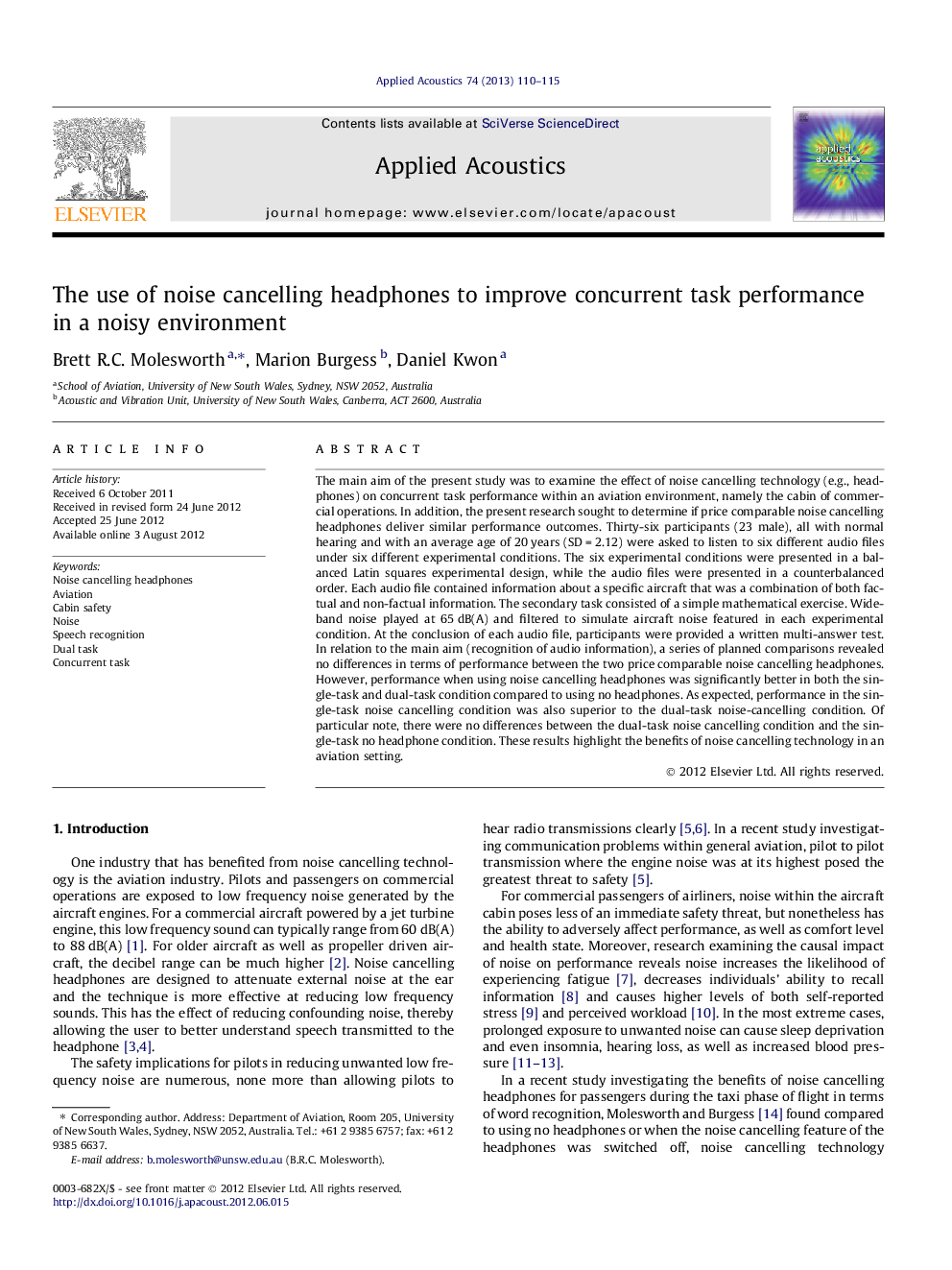| Article ID | Journal | Published Year | Pages | File Type |
|---|---|---|---|---|
| 754725 | Applied Acoustics | 2013 | 6 Pages |
The main aim of the present study was to examine the effect of noise cancelling technology (e.g., headphones) on concurrent task performance within an aviation environment, namely the cabin of commercial operations. In addition, the present research sought to determine if price comparable noise cancelling headphones deliver similar performance outcomes. Thirty-six participants (23 male), all with normal hearing and with an average age of 20 years (SD = 2.12) were asked to listen to six different audio files under six different experimental conditions. The six experimental conditions were presented in a balanced Latin squares experimental design, while the audio files were presented in a counterbalanced order. Each audio file contained information about a specific aircraft that was a combination of both factual and non-factual information. The secondary task consisted of a simple mathematical exercise. Wideband noise played at 65 dB(A) and filtered to simulate aircraft noise featured in each experimental condition. At the conclusion of each audio file, participants were provided a written multi-answer test. In relation to the main aim (recognition of audio information), a series of planned comparisons revealed no differences in terms of performance between the two price comparable noise cancelling headphones. However, performance when using noise cancelling headphones was significantly better in both the single-task and dual-task condition compared to using no headphones. As expected, performance in the single-task noise cancelling condition was also superior to the dual-task noise-cancelling condition. Of particular note, there were no differences between the dual-task noise cancelling condition and the single-task no headphone condition. These results highlight the benefits of noise cancelling technology in an aviation setting.
► Noise cancelling headphones have proven effective in attenuating aircraft noise for pilots. ► However, there is limited research about their effectiveness in the cabin for passengers. ► The present study compares two leading brands of noise cancelling headphones. ► Speech intelligibility during a dual-task exercise is also examined. ► The results reflect favourably on noise cancelling headphones.
